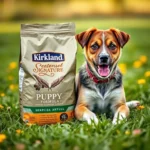
Introduction
Proper dog nutrition is fundamental for your pet’s overall health and well-being. The food you provide not only fuels their body but also impacts their mood, energy levels, and longevity. One of the most common questions among dog owners is, “How many times a day should a dog eat?” Establishing a consistent feeding schedule is vital, as it helps regulate your dog’s digestion and metabolism while also fostering good behavior.
In this guide, we will explore the various factors that influence feeding frequency, such as age, size, breed, and health conditions. By understanding these factors, you can create a tailored feeding plan that meets your dog’s unique needs.
Understanding Dog Nutrition
Basic Nutritional Components
To answer the question of how often to feed your dog, it’s essential first to understand the basic nutritional components of a dog’s diet:
-
Proteins: Vital for growth, repair, and maintenance of body tissues. Proteins are a significant source of energy and are crucial for muscle development.
-
Carbohydrates: These provide energy and aid in digestive health. While dogs can digest carbohydrates, they primarily require proteins and fats.
-
Fats: Essential for energy and the absorption of fat-soluble vitamins, fats contribute to a healthy coat and skin.
-
Vitamins and Minerals: These micronutrients support various bodily functions, including immune system health, bone development, and metabolic processes.
The Role of Water
Hydration is another critical aspect of dog nutrition. Water plays numerous roles in a dog’s body, including:
- Aiding Digestion: Water helps dissolve nutrients for absorption.
- Regulating Temperature: Helps maintain a stable body temperature.
- Facilitating Waste Removal: Water is essential for kidney function and urine production.
Daily water intake recommendations vary based on factors such as size, age, and activity level, but a general rule is that dogs need about one ounce of water per pound of body weight daily.
Factors Influencing Feeding Frequency
Age
The age of your dog significantly influences its feeding frequency:
-
Puppies: Young dogs require more frequent meals to support their rapid growth and high energy levels. A typical recommendation is to feed puppies 3-4 times a day.
-
Adult Dogs: Most adult dogs thrive on 1-2 meals a day. Adult dogs have settled metabolism and can efficiently process food with fewer meals.
-
Senior Dogs: Older dogs may need adjustments in their feeding schedules based on their health and activity levels. Smaller, more frequent meals can help if your senior dog has a decreased appetite or digestive issues.
Size and Breed
The size and breed of your dog also play a crucial role in determining feeding frequency:
-
Small Breeds vs. Large Breeds: Smaller breeds may need to eat more frequently than larger breeds due to their faster metabolism. Small dogs often benefit from 2-3 meals a day, while large breeds can generally manage with 1-2 meals.
-
Active Breeds vs. Less Active Breeds: High-energy dogs may require more frequent meals to sustain their activity levels, while less active dogs may do well with fewer feedings.
Health Conditions
Certain health conditions can also dictate feeding frequency. Dogs with specific medical concerns, such as diabetes, obesity, or gastrointestinal issues, may require tailored feeding schedules. Always consult with a veterinarian to determine the best feeding strategy based on your dog’s health status.
General Guidelines for Feeding Frequency
Puppies
For puppies, a consistent feeding schedule is essential. Recommended feeding times typically include:
- 3-4 times a day until they are about six months old.
- Gradually reduce to 2-3 meals a day as they approach adulthood.
Consistency in feeding times helps regulate their digestion and can assist in house training.
Adult Dogs
Most adult dogs do well with 1-2 meals a day. Feeding your adult dog at the same time each day establishes a routine and can prevent overeating or begging behavior. Maintaining regular feeding times is beneficial for both your dog’s physical health and your sanity!
Senior Dogs
Senior dogs often require adjustments in their feeding routines:
- They may benefit from smaller, more frequent meals (2-3 times a day) to aid digestion and address decreased appetite.
- Consider the dog’s health conditions, as some may need specialized diets or feeding schedules.
Feeding Methods and Practices
Free Feeding vs. Scheduled Feeding
When it comes to feeding methods, two common approaches are free feeding and scheduled feeding:
-
Free Feeding: This method involves leaving food out for your dog to eat at will. While it may seem convenient, it can lead to overeating and obesity in some dogs. It is generally not recommended for dogs with a tendency to graze.
-
Scheduled Feeding: This approach involves feeding your dog at specific times each day. It promotes healthy eating habits, helps regulate digestion, and allows you to monitor your dog’s food intake more effectively.
Portion Control
Portion control is vital for maintaining your dog’s weight and ensuring they receive the right nutrients:
-
Measure Food: Use a measuring cup to ensure you’re providing the correct portion size based on your dog’s age, size, and activity level.
-
Consult Feeding Guidelines: Most commercial dog foods provide feeding guidelines based on your dog’s weight. Use these as a starting point and adjust based on your dog’s specific needs.
Treats and Snacks
Treats can play a role in your dog’s diet, but moderation is essential:
-
Healthy Treats: Opt for healthy, low-calorie treats and be mindful of their contribution to your dog’s overall caloric intake.
-
Limit Treats: A general guideline is that treats should make up no more than 10% of your dog’s daily caloric intake to maintain a balanced diet.
Signs of Proper Nutrition
Physical Indicators
You can gauge your dog’s nutritional health through various physical indicators:
-
Healthy Coat and Skin: A shiny, soft coat and healthy skin are signs of a well-balanced diet.
-
Appropriate Weight and Body Condition: Regular vet check-ups can help you assess whether your dog is at a healthy weight. You should be able to feel your dog’s ribs without excessive pressure, and they should have a defined waist.
Behavioral Indicators
Behavioral signs can also indicate proper nutrition:
-
Energy Levels and Activity: A well-fed dog typically displays higher energy levels and is more active.
-
Digestive Health: Monitoring your dog’s stool quality can provide insights into their diet. Healthy stools should be firm and well-formed.
Common Myths About Dog Feeding
There are several misconceptions surrounding dog feeding that can lead to improper practices:
- Myth: Dogs should eat once a day.
-
Fact: While some adult dogs thrive on one meal, many benefit from two meals daily to regulate digestion and energy levels.
-
Myth: Dogs can eat human food without consequences.
-
Fact: Many human foods are toxic to dogs (e.g., chocolate, grapes) and can cause severe health issues.
-
Myth: All dogs can free feed.
- Fact: Free feeding is not suitable for every dog, especially those prone to overeating or obesity.
Conclusion
In conclusion, understanding dog nutrition is an essential aspect of responsible pet ownership. The ideal feeding frequency for your dog will depend on various factors, including their age, size, breed, and health status. By establishing a consistent feeding schedule and monitoring your dog’s weight and health, you can significantly enhance their quality of life.
Always remember, when in doubt, consult your veterinarian for personalized advice tailored to your furry friend’s specific needs. Your dog’s health and happiness depend on the choices you make regarding their nutrition!
By assessing your dog’s feeding schedule and ensuring they receive a balanced diet, you can help them lead a healthier, happier life. Share this article to spread awareness about the importance of dog nutrition!









